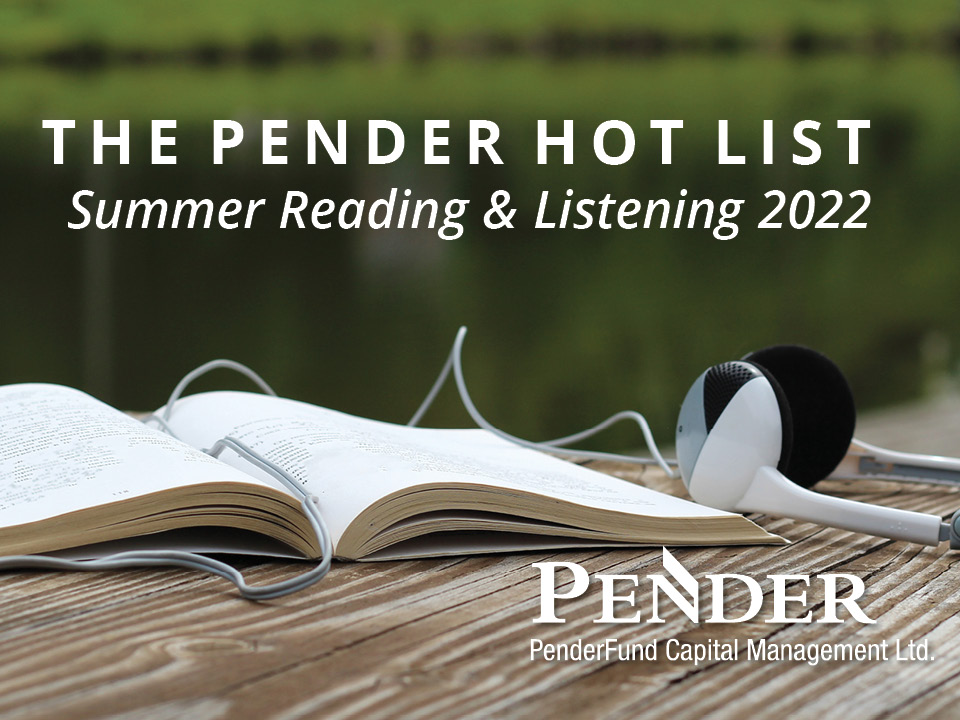
Pender’s ever-popular summer hot list is back! It’s packed with big ideas to challenge and inspire you on a range of topics. FOMO is real. Read on to find out what everyone at Pender is talking about. From all of us to all of you, we wish you and your loved ones a happy and inspiring summer!
Big Ideas
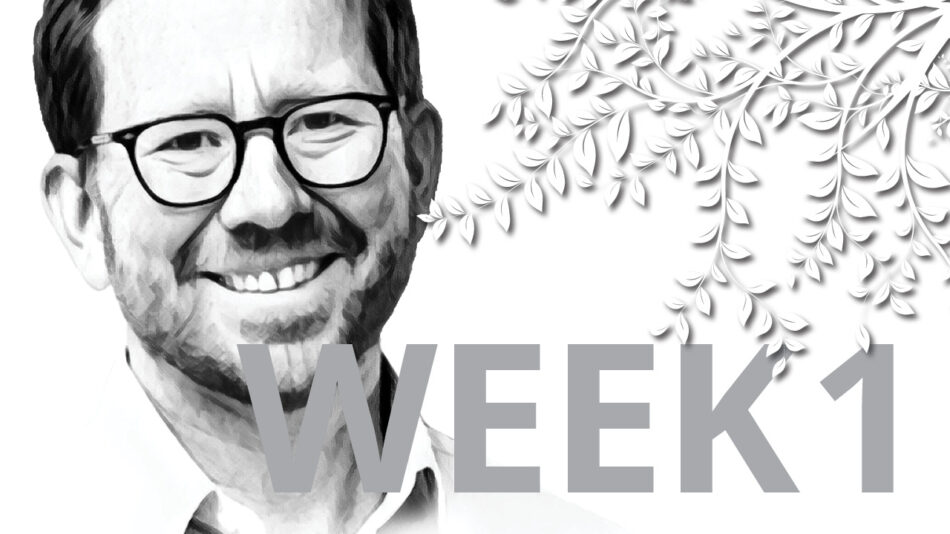
“I found this a timeless read and very informative and interesting.”
The Overview
This book takes the other side of the idea of Malcolm Gladwell’s 10,000-hour rule. It was interesting to read the counterbalance to that, about how, in fact, it is generalists who tend to be more successful. The idea is that your problem-solving and creativity are increased because they have a larger set of experiences and mental models from a range of different areas to draw from. As opposed to taking the path of becoming highly specialized and solving problems through a narrower lens of experience.
The Takeaway
The part of the book I found really interesting was when Epstien talked about polymaths, who have a very deep level of expertise in one area, but then become generalists, and those people tend to be incredibly successful. I think this is to the investment industry, where people dig down deep and become proficient at something, but then they back off and are able to view or improve their decision-making ability by having a lot of different mental models and frameworks available to inform their investment strategy. They can potentially spot patterns that can add alpha to portfolios and create a non-consensus investment thesis, which is a requirement for driving great long-term returns.
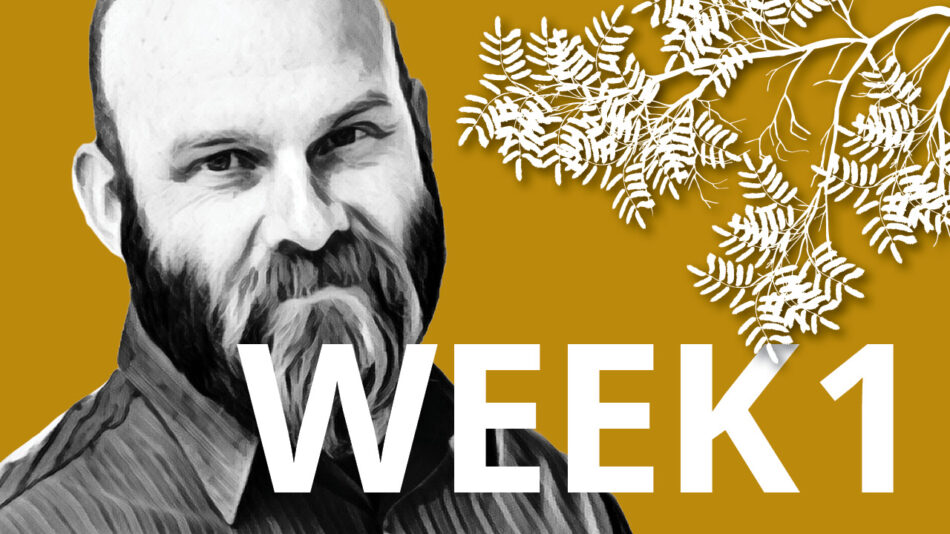
“The modern world is supremely complex. Most people have no idea how it works, but that does not prevent them from having strong opinions. Personal and media bias feed into our collective ignorance. This book is a good primer to help understand the complicated issues related to energy and food production.”
The Overview
The author explains why numerous previous efforts to address climate change have failed. The world has become increasingly polarized about how its citizens view the future. On one extreme are “catastrophists” who envision Armageddon. On the other extreme are “cornucopians” who believe technology will magically solve all our problems. Both extremes have long records of making dubious and embarrassingly wrong predictions in the past. Smil suggests that will probably be the fate of today’s divided cohorts as well. Forecasting is hard, especially when dealing with multiple-variable, complex adaptive systems like today’s modern economy or the earth’s biosphere. Our future is not predetermined. It likely lies somewhere in between these two polar views. Removing ignorance about how the world really works should increase the odds that our actions have the real impact we seek.
The Takeaway
The book shows how dependent we are on fossil fuels for the foreseeable future. It opens our eyes about how challenging a carbon neutral future is any time soon, despite pronouncements by countries to hit their climate change targets over the next few decades. History has shown that it is much easier to make promises than to take any real action. Ultimately, what is required to address human-caused climate change is unprecedented collective commitments and sacrifices from today’s generation, with much delayed potential rewards to future generations.
Investing
Amar Pandya, Portfolio Manager, recommends:
The Synergy Solution: How Companies Win the Mergers and Acquisitions Game by Mark Sirower and Jeff Weirens
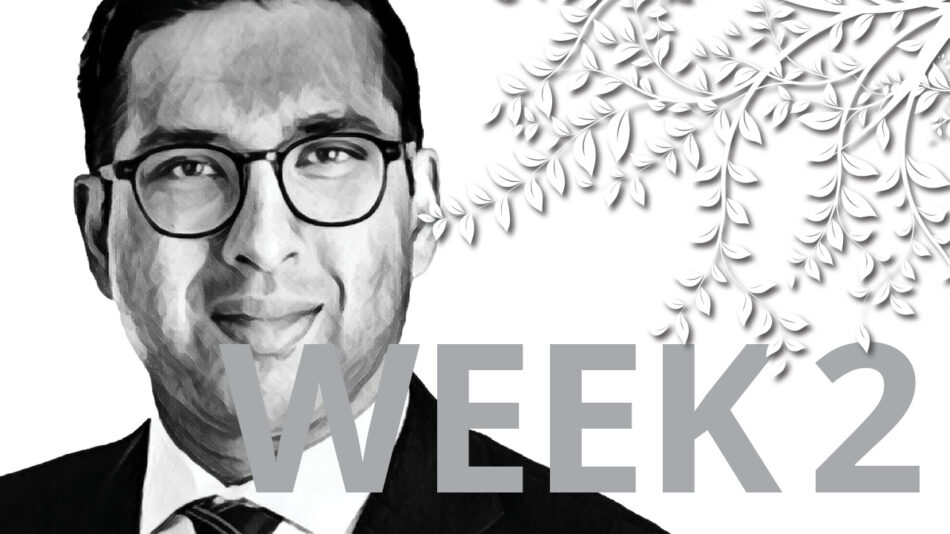
“I found The Synergy Solution an interesting read showing the acquisition process prior to the deal being announced through closing, integration and post-closing execution.”
The Overview
2021 was a historic year for global M&A activity with over $5.9T of deals announced globally. With the launch of the Pender Alternative Arbitrage Fund last year, I spend a lot of time going through merger deals, understanding the motivations and incentives of both the acquirer and target company and the risks impacting the timing and successful completion of a corporate merger. For merger arbitrage every detail impacting a deal is important until the merger closes’ however after the successful closing, we move on to the next opportunity and give little to no consideration to how the acquisition has worked out for the acquirer. Authors Sirower and Weirens, who work as M&A advisors at Deloitte, have written a comprehensive guide on M&A determining what factors drive the best merger deals. They analyzed over 1,200 acquisitions over a 24-year period analyzing what factors impact, influence and can predict a higher probability of creating shareholder value.
The Takeaway
The authors’ conclusion on sellers being the biggest beneficiaries of M&A deals is no surprise to us at Pender with our private-equity approach to public markets helping us identify takeout catalysts and driving our track record of 81 acquisitions offers within our equity funds since 2010. We certainly prefer to be sellers than buyers when it comes to M&A but it is highly valuable to understand the strategies acquirers can implement to increase their probability of success.
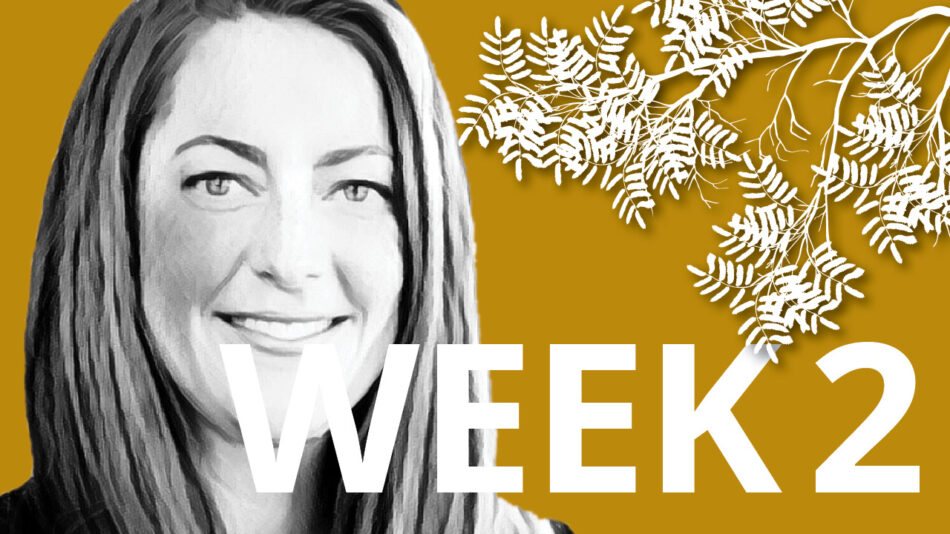
“Although written a number of years ago, this book gives a good overview of the attributes of convertible bonds, evaluation, strategies and performance of these instruments.”
The Overview
Convertible Securities: The Latest Instruments, Portfolio Strategies, and Valuation Analysis, by John P. Calamos provides an in-depth look at an area of the fixed income market that has been characterized by strong relative returns. According to CreditSights, as of May 27, 2022, the 10 yr annualized total return for convertibles was 12.60%, outperforming High Yield at 5.36% and High Grade at 3.12% [1]. The book suggests that the income characteristics of the convertible, including the coupon payment, repayment of principal at maturity and priority over common stock in the capital structure, along with the optionality of the conversion feature, can allow convertible securities to achieve a reasonable proportion of the upside potential of common stock while taking on only a portion of the downside risk. Therefore, by having characteristics of a fixed income security along with exposure to the capital gain opportunities of common stock, convertible bonds can provide an attractive investment opportunity. The author suggests that although convertible bonds have been used since the 1800s, interest in these instruments grew out of the increased volatility of the stock and bond markets of the 1970s. Calamos observes from 1979 to 1984 “when the bond market declined due to double-digit inflation and interest rates, convertibles appreciated in value, unlike other fixed income vehicles. As a result, convertibles outperformed both the stock and bond markets over that period.”
The Takeaway
The convertible market has evolved since the ‘70s however, given the current level of inflation, and the interest rate increases we have seen in response to this, convertible bonds may provide one means by which we can help mitigate the impact of these forces within a fixed income portfolio.
[1] CreditSights, May 27, 2022
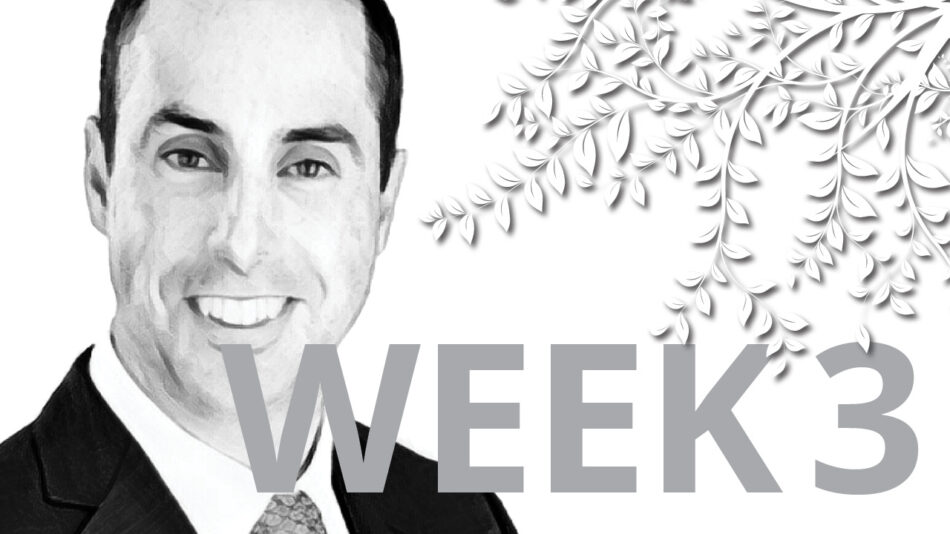
“One of the great things about social media is the ability to hear from subject matter experts unfiltered and in real time as news develops”.
The Overview
There are lots of great investors and analysts who are active on Twitter, including those who are responsible for billions of dollars of capital:
JIM CHANOS – @WALLSTCYNIC
(Not officially Jim Chanos but broadly understood to be him, his handle is Diogenes after the ancient Greek cynic.) Jim grew up in Milwaukee with Greek immigrant parents. Jim and his team at Kynikos Associates specialize in short selling. The account comments on a wide variety of individual companies as well as macro topics. He is a talented business analyst and is great at identifying risks that the market might be either missing or mispricing. His track record is far from perfect but he has been correct about companies like Wirecard which was an accounting fraud that ultimately filed for bankruptcy. He teaches a course about the history of financial fraud at the Yale School of Management, with some of the content from the course appearing in his Twitter feed.
Many of the companies he discusses are issuers in the high yield market. He brings up risks and arguments which are good to test your portfolio against, even if he is discussing a different company.
Jim recently appeared on Bloomberg’s Odd Lots podcast which is worth listening to for his perspective on many current market themes.
PIERRE ANDURAND – @ANDURANDPIERRE
Pierre is an exceptionally talented commodities hedge fund manager who has a great track record of identifying supply and demand imbalances in the energy market and the likely impact on prices. He has been correct about several major market moves both up and down over the past several years and is having an outstanding start to 2022. Recently, he has made a case for a tighter oil market in the second half of this year based on seasonal increases in demand, the return of China and a slowing of releases from Strategic Petroleum Reserves. During the 2014-2016 decline in oil prices he was ahead of the curve in recognizing that supply growth from US shale and other regions around the globe was greatly outpacing demand growth which would create a significant repricing of the oil market.
He’s not shy about his support of Ukraine and his horror at Russia’s invasion
MOHAMED A. EL-ERIAN – @ELERIANM – ALSO QUITE ACTIVE ON LINKEDIN.
Mohamed is one of those rare people who doesn’t have a personal agenda and tries to be as impartial as possible. His strength is global macro. He has been early in recognizing the potential impact of inflation and a lagging central bank response and was well ahead of the crowd in sounding the alarm about the potential impact of COVID-19 in early 2020. Mohamed has a wealth of experience from his time at the International Monetary Fund and with several high-profile asset managers.
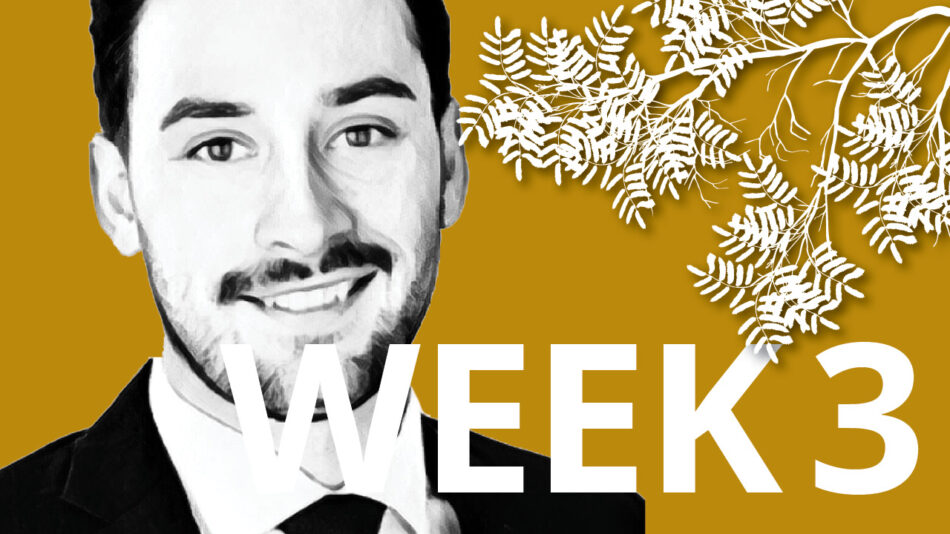
“The Investor’s Podcast Network is an exceptional resource for any investor, regardless of background or experience level.”
The Overview
The Investor’s Podcast Network features seven different podcasts covering themes ranging from public market investing to real estate, start-ups, and even self-help. The website goes a step further by providing an endless supply of additional resources like book recommendations made by industry legends and various educational video series that are tailored for novice investors. In particular, the flagship ‘We Study Billionaires’ podcast hosted by Stig Brodersen and Trey Lockerbie is one to tune in to. The show began as a podcast dissecting and analyzing the core learnings developed by successful investors over the span of their careers, but over time expanded to a platform for discussion with well-known practitioners and industry experts.
Today, the show has an impressive catalog of over 400 episodes and boasts guests such as Ray Dalio, Guy Spier, Jeremy Grantham, and many more. The podcast is a great source of near real-time insights into how experienced investors view current events and their impact on financial markets. It is also a vehicle for learning about various subjects straight from credible experts.
The Takeaway
TIP438: Berkshire Hathaway Masterclass with Chris Bloomstran was a recent episode that I found intriguing. Chris has been a Berkshire shareholder since the late 1990s and has closely followed the Omaha-based conglomerate over the years. He is widely known as an expert on the company and can explain its nuts and bolts in great detail. In the interview, Chris discusses Berkshire’s acquisition of Alleghany, the company’s operating subsidiaries, normalized earnings power, and his estimation of intrinsic value.
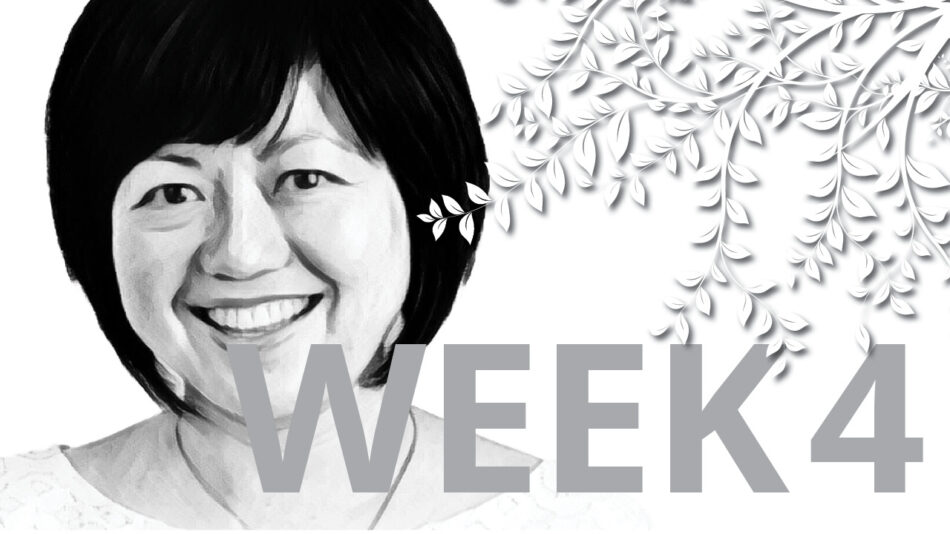
“I started following this podcast several years ago. Invest Like the Best goes beyond investing and touches upon many other subjects such as philosophy and personal growth. I’d love to share this with you as I have really enjoyed and value the podcast for its fantastic collection of ideas and people.”
The Overview
Invest Like the Best is an ongoing series of podcasts hosted by Patrick O’Shaughnessy. The podcast covers a wide range of subjects related to investing and has featured many well-known guests – some of them are famous investors and some of them are talented operators in the field. Patrick is a remarkable interviewer – his breadth of knowledge and ability to connect with the guests always result in conversations that are informative, insightful, while enjoyable at the same time. Patrick and the team have put enormous efforts to make the podcasts a quality learning hub for investing and building businesses. Invest Like the Best (the podcast, show notes, transcripts) are available at https://www.joincolossus.com/, Apple Podcast, Spotify and other platforms.
The Takeaway
I love how Patrick always has the same question for people at the end “What’s the kindest thing anyone has ever done for you?” This is a great reminder that we all get where we are because we are fortunate to have other people’s help along the way. Some of the stories are very inspiring.
Economics
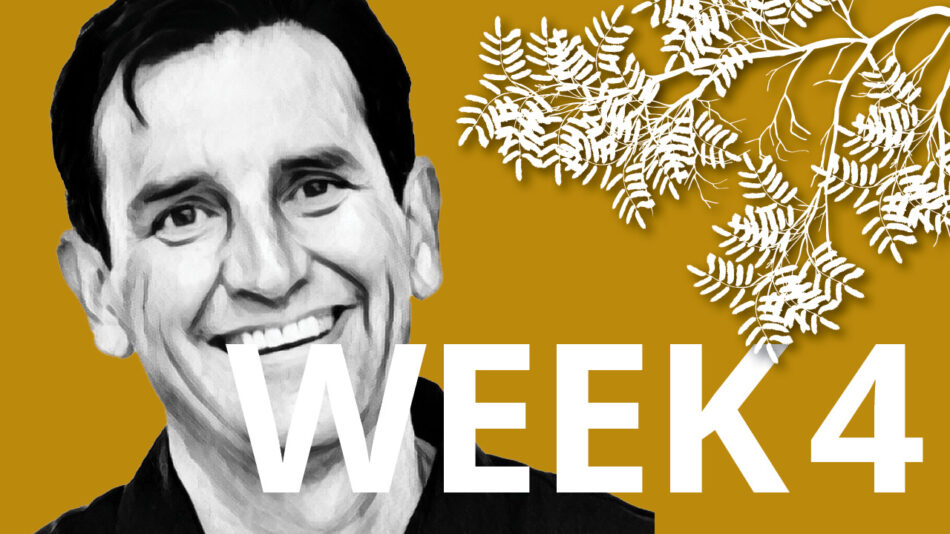
“I enjoyed reading Stephen Poloz’s new book, in which the former Governor of the Bank of Canada lays out a framework for assessing a new era of economic risk.”
The Overview
Poloz expects the current Western monetary system to survive intact, and inflation, in the long run, to be controllable in the range of 2%. But while such longer-term equilibria may be kept, policymakers will be challenged by a variety of “tectonic forces” that may cause short term economic conditions to oscillate at the extremes. Such forces include: the retirement of the Baby Boom generation; a heightened degree of economic inequality (and the populism that such inequality tends to breed); and the new challenges to our physical infrastructure that may result from climate change. Poloz also intersperses in the text several fascinating personal histories, including a real-time description of the extraordinary central bank response to the crisis that emerged with the onset of the COVID-19 pandemic in early 2020.
The Takeaway
The book’s title alludes to the popular 1970s work by John Kenneth Galbraith (The Age of Uncertainty) which is perhaps particularly apt as we have again arrived in a world where, as was the case in the 1970s, an era of relative stability is met with a variety of disruptive challenges. Those who have come to know Poloz as being both an originator of creative economic insights as well as a clear and effective communicator will not be disappointed in this highly readable effort.
Patricia Perez-Coutts, Portfolio Manager, recommends:
Stakeholder Capitalism – A global economy that works for progress, people and planet by Krause Schwab, with Peter Vanham
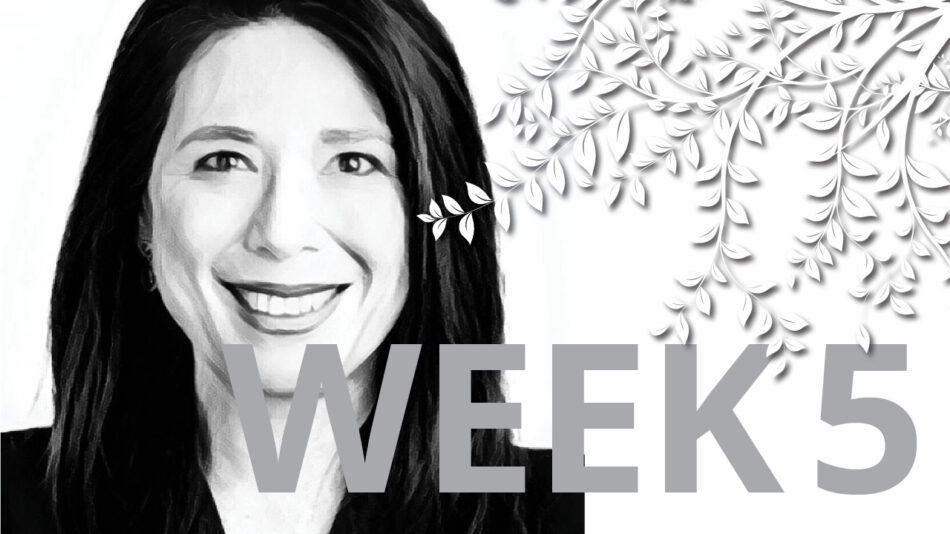
“As investors, we have grown accustomed to seeking growth in companies’ earnings. An important foundation for such belief is the healthy economic growth from which these companies derive strong operating trends. However, increasingly there has been a gap of impact on how these growth pursuits have been or are being achieved.”
The Overview
Stakeholder Capitalism conveys the notion that our communities, social surroundings, our environment and their evolution are also key stakeholders in companies that aim for profitable growth. It is therefore imperative that boards and key decision-makers take these stakeholders into consideration, along with other important groups (bond holders, equity owners, employees, clients) and in partnership with governments and civil society.
The Takeaway
Stakeholder capitalism starts with a recognition of widening societal and income gaps and further, the awareness that these issues should form part of our individual and collective responsibilities.
Venture Capital & Entrepreneurs
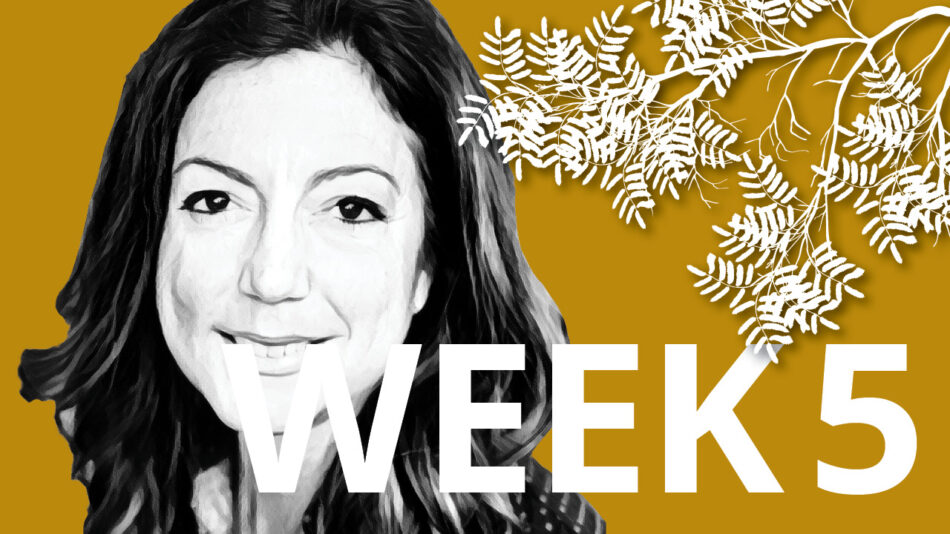
“While there are many books on the ‘craft’ of venture capital, this very candid and extensive narrative covers its inception as an industry through to venture’s modern history.”
The Overview
Through the storytelling of many key figures of the industry, Mallby demonstrates what is known as the “Power Law” that characterizes the venture industry. This Power Law distribution – in contrast to normal distribution that many things in life follow – is essentially the 80/20 rule. The outliers make all the difference because those winners advance at an at exponential rate, driving most of the returns. Knowing this, venture capitalists need to think differently with a very ambitious and risk-seeking mindset– not for the faint of heart. By highlighting key VCs that exemplified their time, geography and style, the book conveys the venture capital mindset and provides a critique of venture capital’s social impact, which is far from perfect. The highs and lows of cycles, and the great winners and the huge blowouts that define the industry bring great triumph in innovation, but also great hubris.
The Takeaway
Love it (or hate it sometimes), there is an important role for venture capital and venture capitalists in society. This book is a highly recommended read for all VCs (and entrepreneurs who wish to understand our mindset). As we are entering a challenging next cycle, the book will help younger VCs decide what kind of venture investor they want to be.
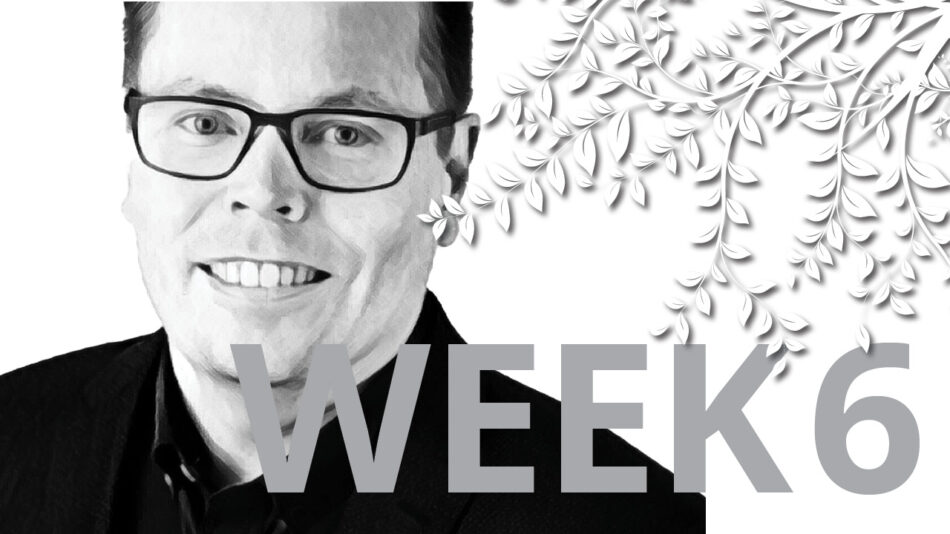
“Vancouver Entrepreneurs Forum (VEF) is a networking forum for technology entrepreneurs which brings the ecosystem together in a fun, relevant and vibrant event each month, designed to stimulate ideas, conversations and connections.”
The Overview
Launched over 30 years ago, VEF is the longest running forum of its type and has a long history of supporting the technology ecosystem and helping facilitate connections. I have had the privilege of working this past season with the board as co-chair bringing together a year of well-attended events.
A unique value-add of VEF is the connections it helps facilitate. While the panel discussions are informative, VEF is a valuable resource to connect with the community and learn about the ‘who’ in the ecosystem. We also give five 100 second blocks at the start of each event for lighting pitches which allow early-stage founders and ecosystem supporters to share their stories.
VEF hosts several events per year, kicking off the season in September. Past events have included forums related to non-financial blockchain technologies, scalable climate solutions, DEI and company building, venture capital exit landscape, trends in digital health and the future of food. Most of the forums are hybrid so also accessible virtually.
The Takeaway
As an example, VEF’s most recent event was a Future of Transportation event held on June 28, 2022, at the Vancouver Convention Centre. The event included participation from companies building some of the fastest electric cars and motorcycles in the world, with both of them bringing their products to demo; a Damon HyperSport and Lucid Air. Learn more about VEF: https://www.vef.org/events
Other
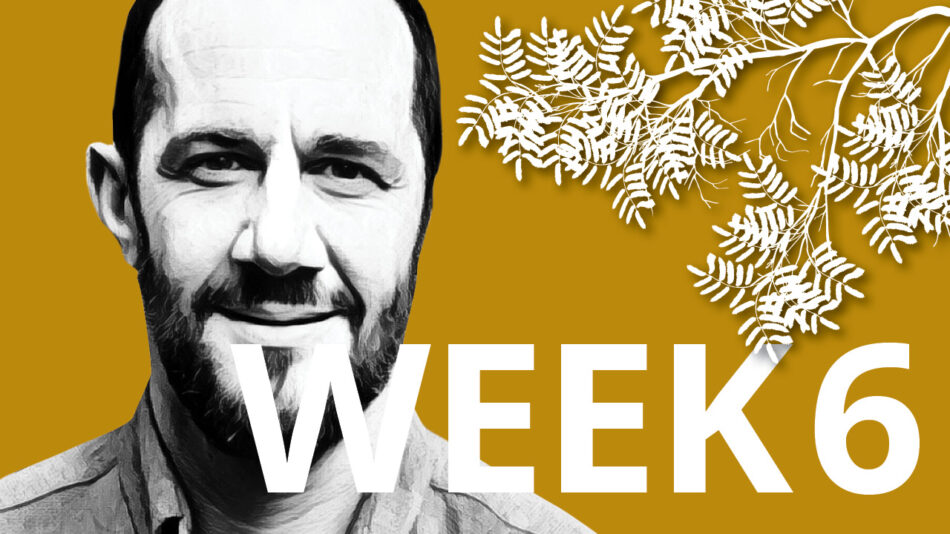
“Metaverse is a front runner for 2022 word of the year. Naturally, corporations have been at the forefront of this trend, with Facebook even going so far as to change its name to ride the wave. Another group that is fascinated by our virtual future are philosophers.”
The Overview
With his book Reality+, David Chalmers, a well-known philosopher, attempts to pen the authoritative take on virtual reality. At the core of Chalmers’ book is the counter-intuitive claim that virtual reality is very much real, a viewpoint he coins “virtual realism”. Chalmers defends this claim ably, with a mix of thought experiments, practical examples and philosophical investigations. Overall, his goal seems to be to create the metaphysics of the future that will allow us to ascribe value and meaning to the disembodied interactions that look to become more central to the human experience as VR and AR continue to develop. An accessible stylist and versatile thinker, Chalmers comes at the issue from many angles, including an entertaining engagement with the so-called “simulation hypothesis”, which posits that our entire existence could be a massive simulation.
The Takeaway
If you are into philosophy of the mind, Reality+ is a must read. The book is also a fun and rewarding ride for non-philosophers, especially those building, investing in or using VR and AR. The combined power of AI and new digital technologies have the potential to fundamentally change the way humans experience the world. In Reality+, Chalmers provides useful tools and frameworks for navigating this change.
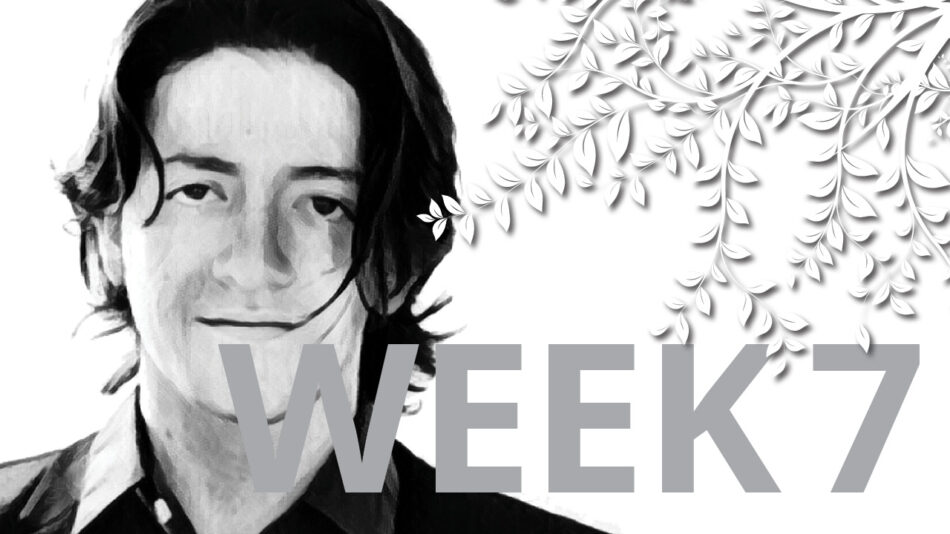
“I find memoirs fascinating. They allow us to enter another person’s world and teach us about lifestyles, places and experiences that are completely different from our own. When I came across Running in the Family in my local library I just had to give it a try. I’m glad I did.”
The Overview
In this book, Michael Ondaatje, who left Ceylon (now Sri Lanka) at the age of eleven, returns 25 years’ later to reconstruct the life his family led. Having an absent father and very little connection to his family, the memoir takes you through his adventure as he tries to piece together the fragmented stories of his parents and grandparents. His family was a part of the upper-class colonial society in Ceylon in the early ‘20s where they led a dissolute life filled with family scandals. Ondaatje acknowledges the decline of the colonial empire and artfully describes the last decades of a lost time and place.
The Takeaway
Ondaatje does an excellent job in getting readers to reflect on their own lives while regaling us with his captivating stories. The book highlights the importance of family and friends and leading a life filled with stories to tell. Through getting to know about the lives of people on the other side of the globe a century ago, this book left me thinking about how our own lives are also unique, temporary and to just make the best of it. It made me think about the importance of taking risks and pursuing different experiences.
Tracy Tidy, Equity Analyst, recommends:
Superforecasting: The Art and Science of Prediction by Philip E. Tetlock and Dan Gardner

“Do you want to become better at forecasting – whether in business or in daily life? Drawing on years of research, Tetlock and Gardner show that good forecasting doesn’t require powerful computers, massive amounts of data or even a high level of education.”
The Overview
“Superforecasting demands thinking that is open-minded, careful, curious and-above all, self-critical.” It is a process that involves gathering information, thinking probabilistically, keeping score and changing direction when new information is presented. Superforecasters possess both a growth mindset – always looking to learn and an active open-mindness – always willing to test beliefs. With superforecasters, what they think isn’t as important as how they think. Tetlock and Gardner give us tools to help us cultivate better forecasting skills. They suggest we need to distinguish between what is known versus unknown and leave no assumptions unscrutinized.
As they say: Foresight isn’t a mysterious gift bestowed at birth. It is the product of particular ways of thinking, of gathering information, of updating beliefs. These habits of thought can be learned and cultivated by any intelligent, thoughtful, determined person.”
The Takeaway
The authors explain that forecasts are judgements based on information available at that point in time and that should always be updated when facts or new information comes to light.
Sign Up To Our Newsletter
Stay Connected
Join our online community and receive a monthly round up of new blog posts, commentaries, podcasts, media coverage and more.

















